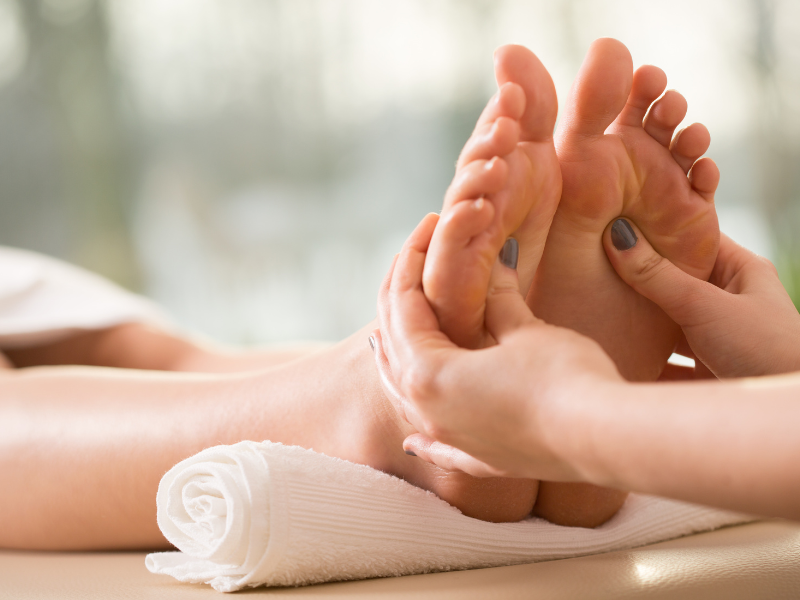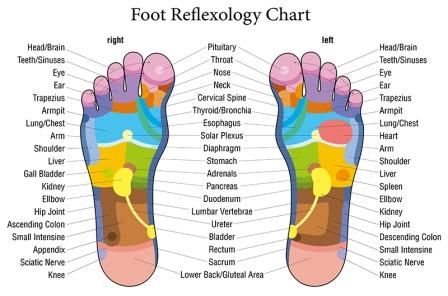
Overview
Reflexology is a holistic healing technique that involves applying pressure to specific points on the feet, hands, and ears. These points, known as reflex points, correspond to different organs and systems in the body. By stimulating these points, reflexology aims to promote relaxation, improve circulation, and encourage the body's natural healing processes.
Application
During a reflexology session, a trained practitioner applies firm pressure to the reflex points using their thumbs, fingers, or specialized tools. This pressure may be accompanied by gentle massage techniques to enhance relaxation. Reflexology sessions typically last between 30 to 60 minutes and can be tailored to address individual health concerns or goals.

Benefits of Reflexology:
Stress reduction:
- Reflexology can induce a state of deep relaxation, helping to reduce stress and tension throughout the body.
Eye Exercises:
- Look up and down, then side to side, to engage the muscles around the eyes.
Neck and Jaw Stretch:
- Tilt your head back and forth, gently stretching the neck and jaw muscles.
Forehead Smoothing:
- Place fingers on your forehead and apply gentle upward pressure while raising your eyebrows.
Fish Face:
- Make a fish face by sucking in your cheeks, then smile to engage different facial muscles.

Precaution:
While reflexology is generally safe for most people, it may not be suitable for everyone. Individuals with certain health conditions, such as foot injuries, circulatory disorders, or pregnancy, should consult with a healthcare professional before undergoing reflexology. Additionally, reflexology should not be used as a substitute for medical treatment, but rather as a complementary therapy to support overall health and wellness.
